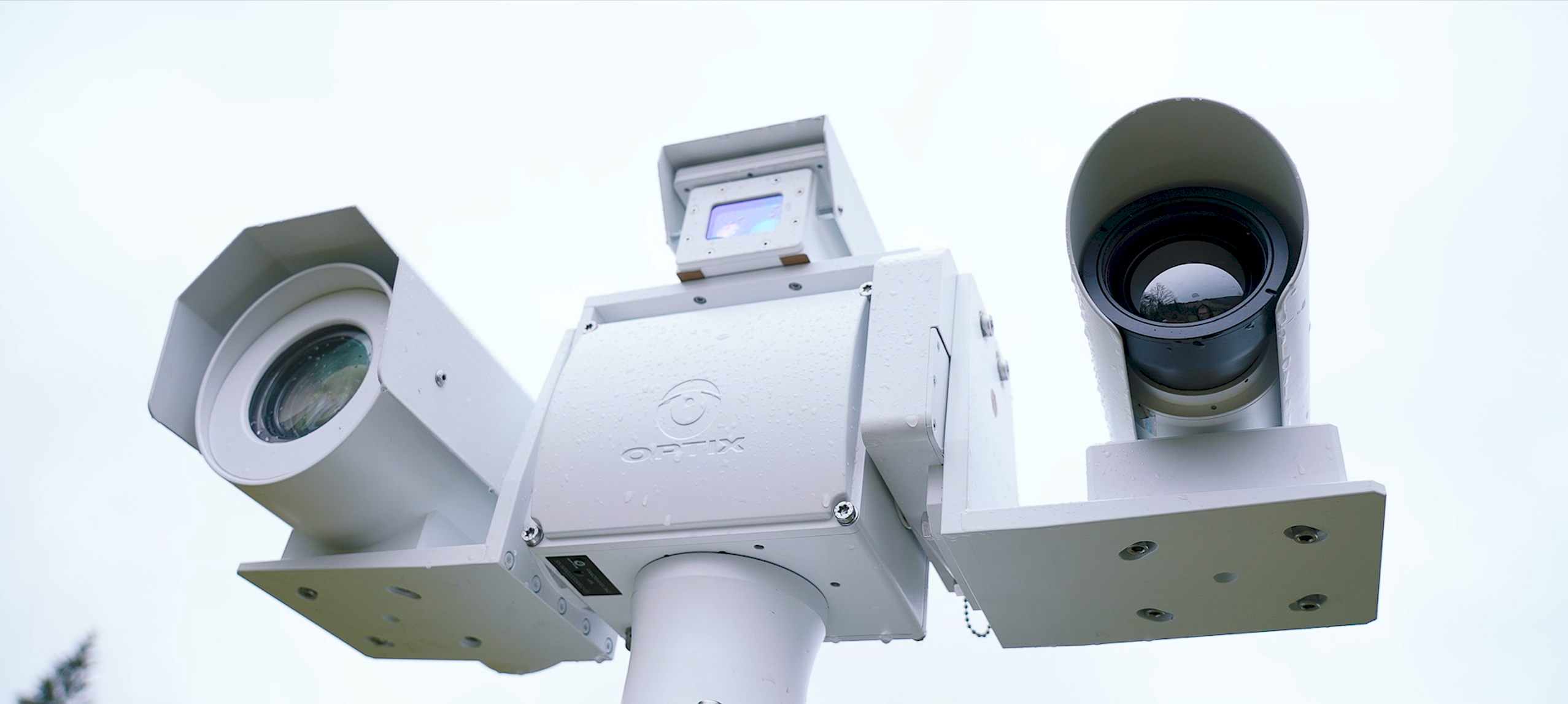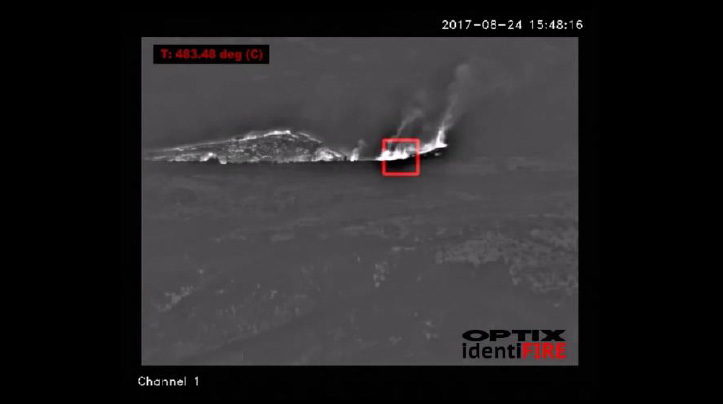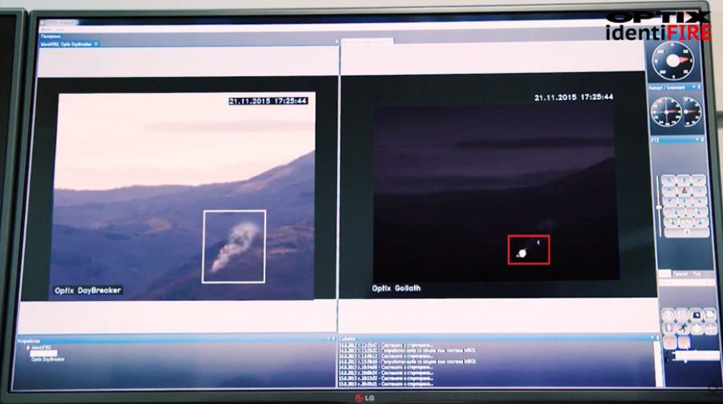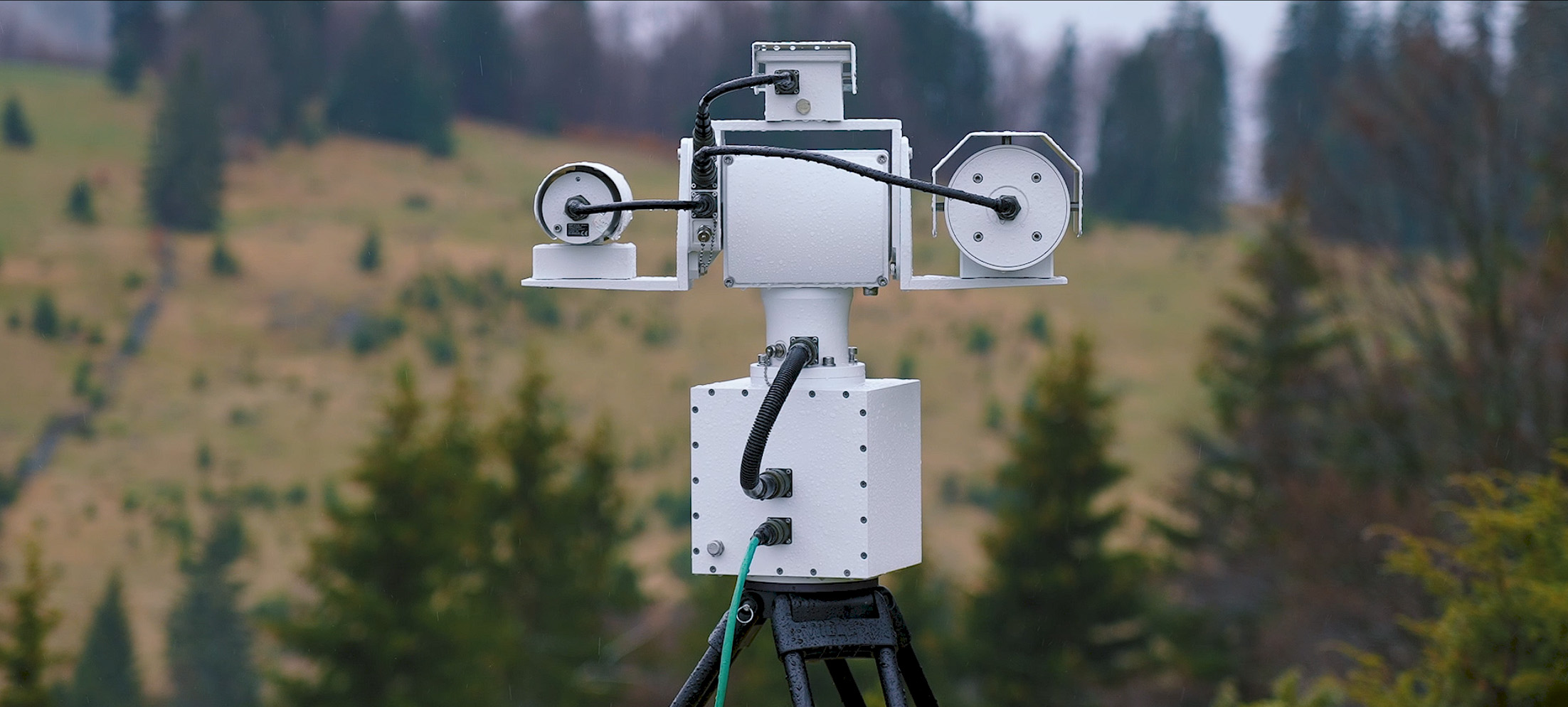Early forest fire detection
Fires are colossal and destructive disasters. They can cause serious and often irreversible damage to forest ecosystems, reduce the number of biological species, disrupt the balance of nature, and alter the Earth’s climate. During dry and warm summer months, when hot and strong winds blow, the threat of fires increases dramatically. A newly ignited fire, whether caused by human negligence or high temperatures, can spread at a speed of up to 2 km/h. Early forest fire detection appears to be highly desirable in today’s times.

Detection ranges according to fire size:
-
1m x 1m
0,8km -
2m x 2m
1,6km -
3m x 3m
2,3km -
6m x 6m
4,7km -
24m x 24m
19km -
40m x 40m
40km
*Distances are calculated based on geometric values and do not account for atmospheric conditions. The detection range can be significantly affected by meteorological, atmospheric, and geographical factors!
How does forest fire detection work?
The OPTIX IdentiFIRE system detects forest fires in their early stages of development using infrared radiation heat detection. An IR detection algorithm identifies the pixel with the highest temperature in the image captured by the thermal imaging camera.

Smoke detection during daylight hours, the AI smoke detection algorithm analyzes video from an HD color camera. If smoke is detected, the zone is marked and the operator is automatically alerted.

The only effective way to minimize damage caused by forest fires is early detection and rapid response. The IdentiFIRE early fire detection solution, developed by OPTIX, helps government agencies detect forest fires promptly and control their spread.

Key features
- System OPTIX identiFIRE detects forest fires in their early stages
- OPTIX identiFIRE uses thermographic functions based on specially designed OPTIX cameras, delivering greater detection efficiency
- System OPTIX identiFIRE provides excellent performance in hilly, mountainous and high-altitude environments
- OPTIX identiFIRE suppresses non-combustible effects such as airborne particles, sun reflections, vehicles, flying birds, etc., to minimize the number of false alarms while ensuring high reliability.

Deployment of OPTIX cameras in the Silvanus project
Frequently Asked Questions (FAQ)
It is an early warning system that detects fires in their initial stage using sensors, cameras, or satellite data.
Thermal cameras, smoke sensors, AI image analysis, satellites, and drones are used.
It reduces damage, enables rapid response, and protects the environment and property.




